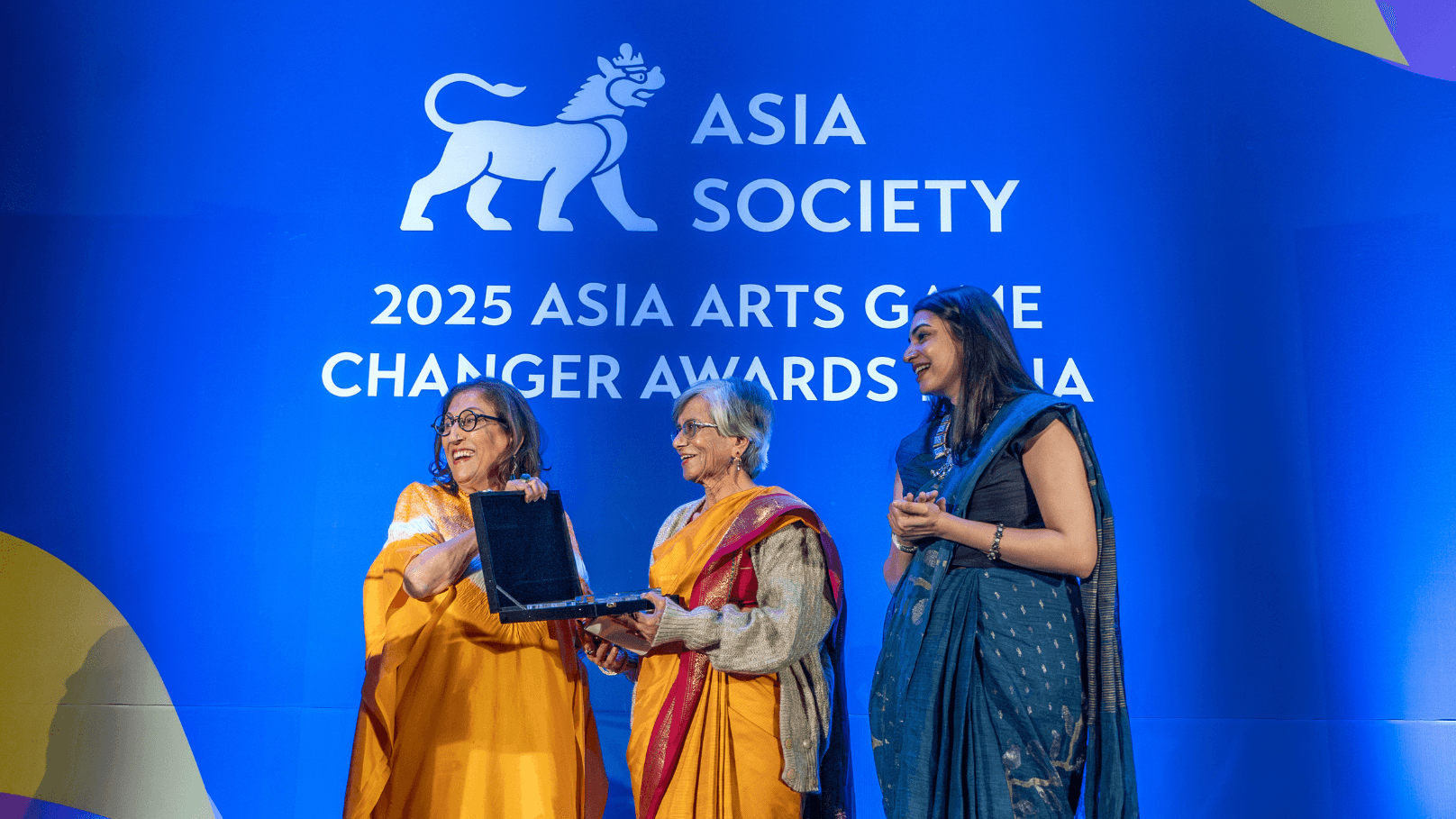For the 9th year, the Asia Society India Centre held its Game Changer Awards during the India Art Fair. This year’s awardees are Anupam Sud, who won the Asia Arts Vanguard Award, Shilpa Gupta, who won the Asia Arts Pathbreaker Award, Jayeeta Chatterjee who won the Asia Arts Future Award for India and Karachi LaJamia, who won the Asia Arts Future Award for South Asia. The awards recognise innovation and excellence in contemporary art practices from India and South Asia. The dinner, which brought together over a hundred guests from around the world, particularly from India and South Asia, included eminent artists, collectors, patrons, diplomats, heads of cultural institutions, and members of Asia Society’s board and advisory council.
The awards were co-chaired by Sangita Jindal, Kiran Nadar, Pheroza Godrej and Radhika Chopra. This edition of the awards focused on artists and art practices from India and Pakistan, with the guidance of guest advisors Nada Raza and Zarmeene Shah.
Inakshi Sobti, CEO of Asia Society India Centre, said, “The awards are part of a wider, long-term engagement with South Asian art and our goals for the future are to bring our artists greater visibility; more opportunities like fellowships and residencies. Across generations and geographies, our awardees examine life with keen eyes, the way we are in public and in private, identities that are voluntary and involuntary—the incredible diversity of their approaches to these questions is inspiring. Their work explores what it means to be from South Asia, which is an important question for our future, and it’s wonderful to bring together a community that cares deeply about contemporary art and wants to celebrate these artists.”
Co-host and art patron Radhika Chopra said that the awards and the recipients reflect the development of contemporary art of the region. “This year we introduced the Asia Arts Pathbreaker Award which celebrates an artist or group of artists that push the boundaries of their creative practice, going beyond the conventions of media and geography to build an exceptional body of work. The Game Changer Awards are one of the most inclusive initiatives in the region, one that truly celebrates our diverse and pathbreaking practices in the arts.
Anupam Sud was recognised as a senior visual artist who has pioneered contemporary art with her practices and been an educator, scholar or mentor to other artists, influencing generations of young practitioners and students of visual culture in India. Working mainly with intaglio prints, Sud fuses her knowledge of different intaglio processes with lithography and screen-printing. Her zinc plates breathe with a life, now suggesting the contours of a sculpture, now hinting at the warmth of oils.
Shilpa Gupta was recognised as the next generation of vanguards in the making – an established contemporary artist from India who has consistently experimented with standard conventions of medium, geography or discipline in recent years in their artistic practice. Her work engages with the defining power of social and psychological borders on public life. Gupta is known to sensorially challenge her audience to occupy subject-positions of the ‘other’, even if temporarily, to initiate an empathetic understanding.
Jayeeta Chatterjee was recognised as an emerging contemporary visual artist or collective from India with a growing body of work that enables a deeper understanding of their region and cultural landscape to South Asian audiences and beyond. Her practice is characterised by a blend of printmaking, textiles, and embroidery. Central to her art is the traditional Nakshi Kantha embroidery of Bengal, which she revitalises with a contemporary twist by integrating it with woodcut prints.
Karachi LaJamia, founded in 2015 by artists Shahana Rajani and Zahra Malkani, was awarded as an emerging artist from the subcontinent who is building a body of work that articulates and explains a lived experience of their region and cultural landscape to audiences around the world. They have facilitated a series of site-specific courses and collaborative research projects to explore the intersections of militarism, climate crisis, indigenous dispossession, and knowledge production in Karachi.
Also read: Arpita Singh’s work gets its first solo retrospective in London’s Serpentine
Also read: A dynamic experimental theatre and multifunctional space opens at the Kanoria Centre for Arts
Also read: From the home to the world: Meet 5 South Asian artists thriving in London

